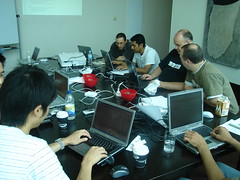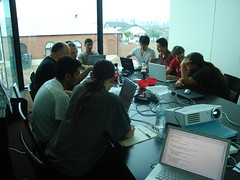In the Development Team of the Future (DTOTF, copyright pending), all communication will be clear, open, forthright and well articulated. Sadly, our current development teams still consist of human beings, using writing and the spoken word, so there's not much hope of transitioning to DTOTF any time soon.
Ok, funny intro (at least I hope so), but what's the point? As I've said before, I think that most commercial software development is a social problem, not a technical problem, in the sense that we know we can build something but we need to figure out how to build it as effectively as possible with the team that we have. It's about people, and people are often poor communicators.
One of the things I encounter fairly often is people using what I think of as "weasel words". They're words that hide conflict under the cloak of respectability. When you're hit with a weasel word you need to choose between abdicating your position (often with some new emotional baggage) or moving to open contradiction and conflict. If you're inadvertently flinging weasel words around you may be surprised by the results!
So what are the weasel words? There are lots, but my list starts with these: "just", "must", "have to", "pragmatically", "realistically", "in the real world", "in practice". "Just" diminishes, trivialising the problem; "must" and "have to" beg the question "or what?"; "pragmatically" and "realistically" imply that the other person isn't being either; "in the real world" and "in practice" label the other position as somehow irrelevant. They all have uses in the right context, but they're also frequently disrespectful.
If you find yourself about to use one of these words (and these are just examples, not an exhaustive list) ask yourself if they're necessary, if they're adding value to your expression. Or try living without them for a while and see how things go. My personal quest for the last 18 months has been to eliminate "just" from my vocabulary, or at least minimise my usage. After all, it's just one word - how hard can that be?








